The Church of St. John
Churches have been an integral part of Narva's cityscape since ancient times. Built at different times and in various architectural styles, they gave the city a special character. By the mid-17th century, Narva became one of the main religious centers of the Swedish possessions in the Baltic region. At that time, the Cathedral was built on Viru Street in the historic center of the city for the Swedish community. In 1645, even before its completion, the Swedish government approved the church as the Royal Cathedral. Besides its main purpose, the church also became a burial place for the richest and most influential residents of the city, who were buried inside the church.
In 1704, with the conquest of Narva by the troops of Tsar Peter I, the Cathedral was transformed into an Orthodox church in the name of St. Alexander Nevsky, and four years later it was closed altogether. In 1733, with the consent of the Russian Empress Anna Ivanovna, the Swedish Cathedral was transferred to the German parish. A year later, the church was consecrated in the name of St. John. Throughout its history, St. John's Church suffered several fires, was damaged by artillery shelling by the Red Army in 1919, but was restored each time.
Before World War II, St. John's Church was listed as a monument of architecture in Estonia, with 77 items inside recognized as artistic treasures and registered. During the war in 1944, the church building was destroyed, and the ruins were demolished during the Soviet era in the 1950s.
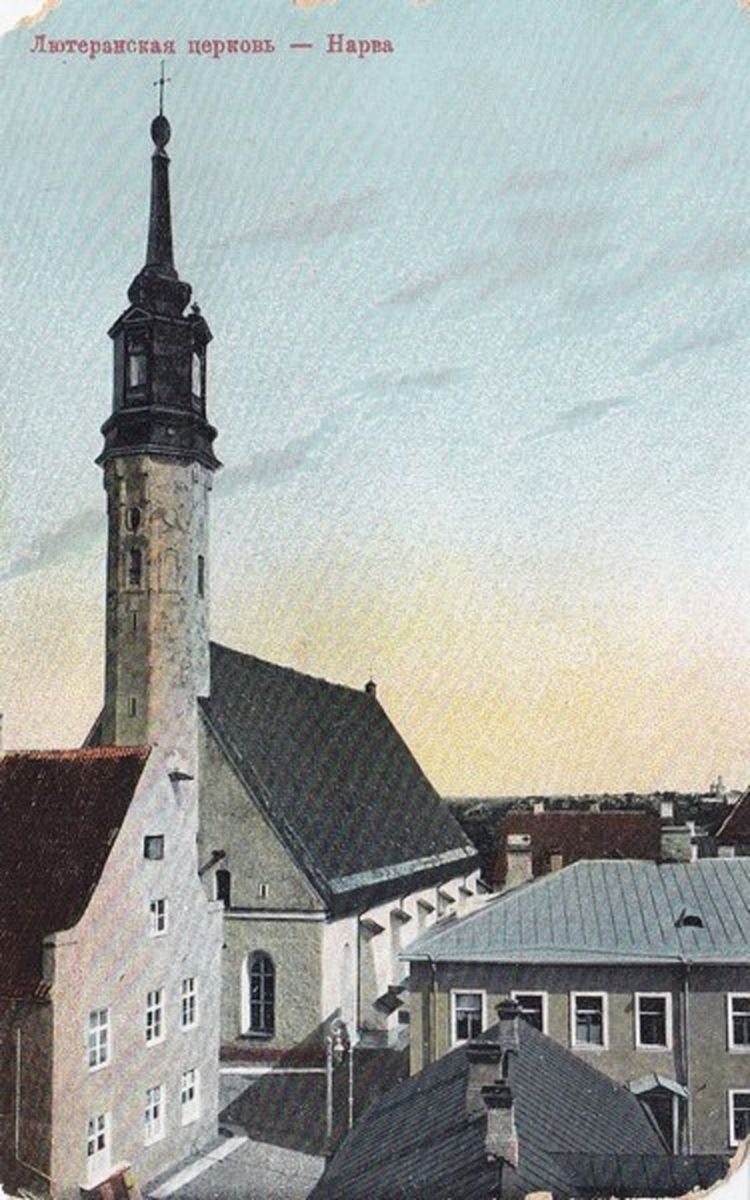
View of St. John's Church. Publisher K. Tiikman. 1905-1918. NLMF143_1
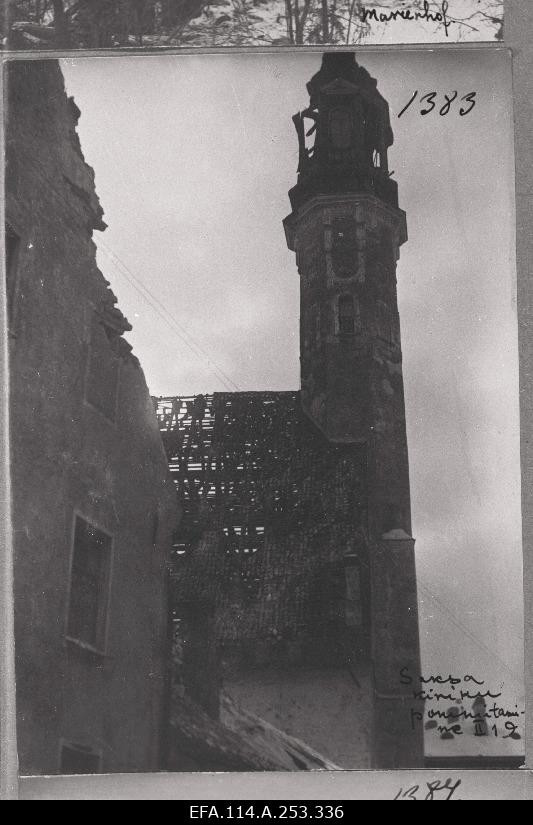
The Church of St. John, which suffered damage as a result of artillery bombardments by the Red Army. According to the memoirs of the writer August Tynurist: "...The Bolsheviks targeted the tower of the German church... It was believed that fire spotters for the Estonian batteries were located in the church tower...". Photo from 1919. EFA.114.A.253.336
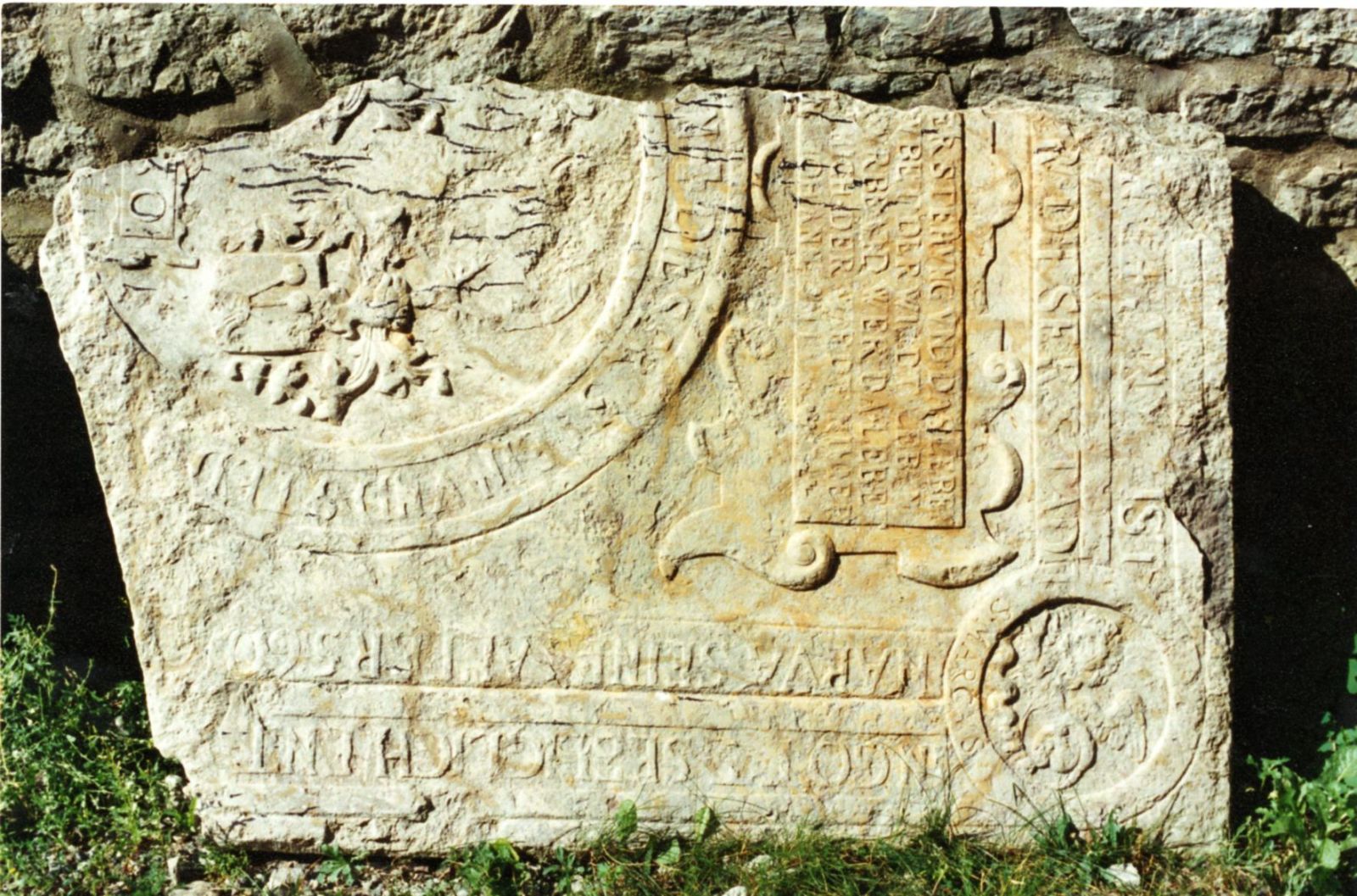
Fragment of the tombstone of Heinrich Morian, which was located in the Church of St. John. 17th century. Photo by Yaroslavna Nazarova. 2022

Inside the church, round columns, mounted on quadrangular pedestals, were crowned with simple capitals and transitioned into cross vaults of the ceiling. Photo by Johann Treufeldt. 1939. NLMF585_12
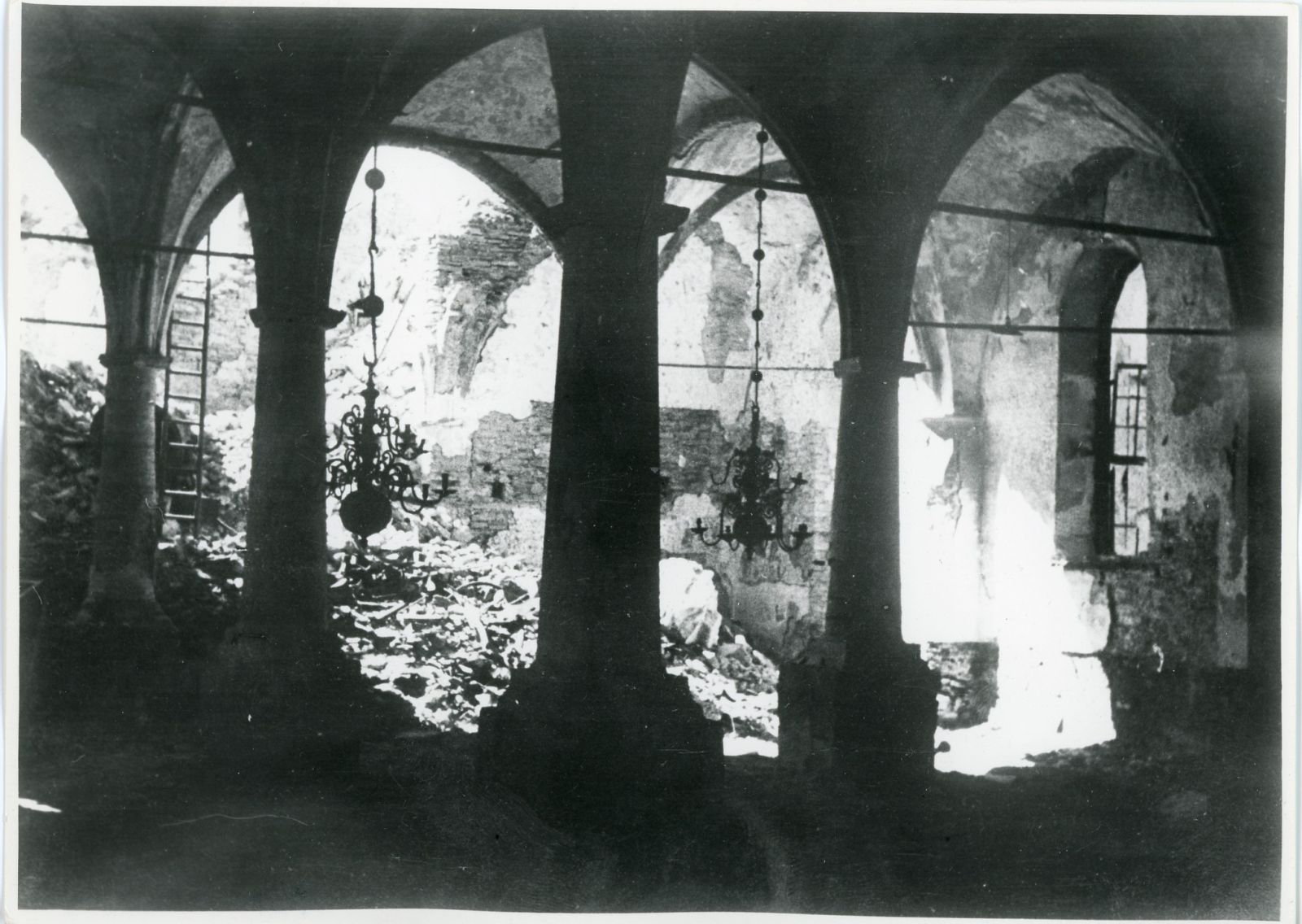
The ruined St. John's Church. Photo from 1944. NLMF202_10
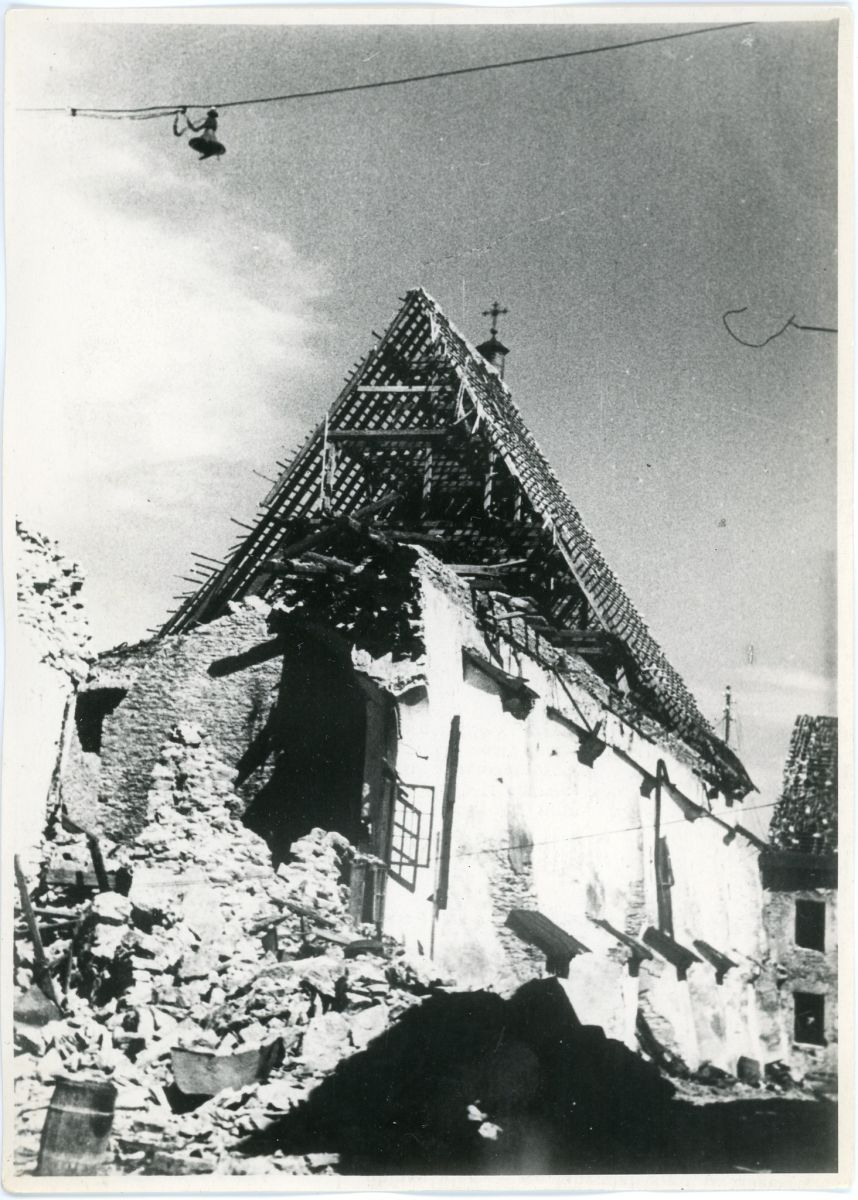
The destroyed St. John's Church. Photo from 1944. NLMF202_6
